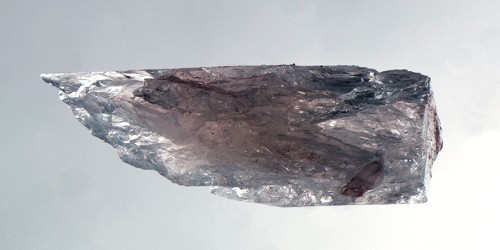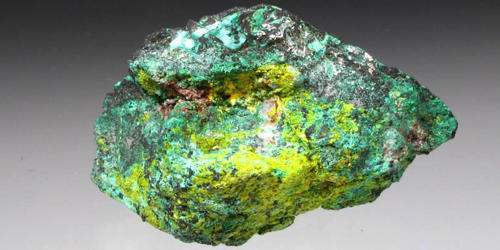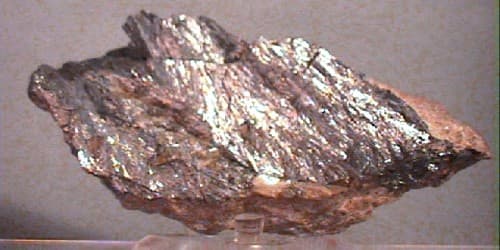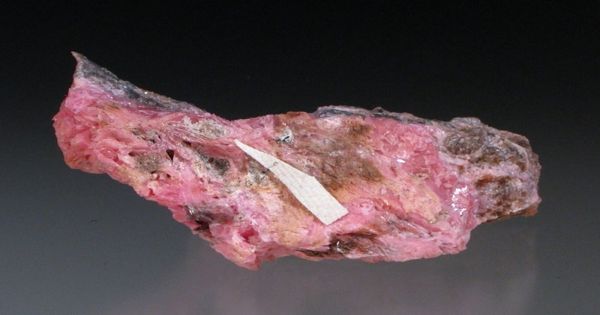“Deer stones” (also known as ‘reindeer stones’) are a series of over 1200 ancient standing stones scattered across Mongolia and Siberia, given their name because many of them include elaborate carvings of flying deer. There are many theories to the reasons behind their existence and the people who made them.
Deer stones are usually constructed from granite or greenstone, depending on which is the most abundant in the surrounding area. They have varying heights; most are over 3 feet tall, but some reach a height of 15 feet. The tops of the stones can be flat, round or smashed, suggesting that perhaps the original top had been deliberately destroyed. The stones are usually oriented with the decorated face to the east. Scientists believe they were erected over 3000 years ago by Bronze Age nomads.
Deer stones have three ornamented anthropomorphic sections: a “face”, “torso”, and “lower-body” section. The face part contains human faces, a symbol of sun and moon and earrings while stylized deer, elk occasionally horses and ibexes are engraved in the torso. In the lower body part, there are images of weapons, belts, and horse riders. The main decoration, deer images are classically depicted in a superimposed extraordinary abstract style. However, in many cases, deer images or other animals such as horses, ibexes and pig images are occasionally depicted in rough appearance.
The carvings and designs were most usually completed before the stone was erected, though some stones show signs of being carved in place. The designs were pecked or ground into the stone surface. Deep-grooved cuts and right-angle surfaces indicate the presence of metal tools. Stone tools were used to smooth the harsh cuts of some designs. Nearly all the stones were hand-carved, however, some unusual stones show signs that they could have been cut with a primitive type of mechanical drill.
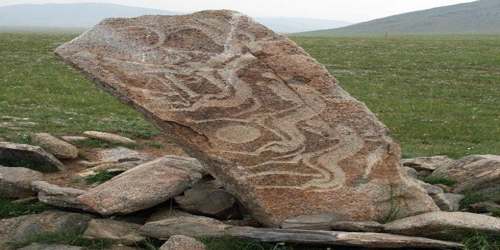
According to UNESCO:
“Mongolia is rich with monuments and complex heritage sites that belong to Bronze Age culture. The main Bronze Age monuments are khirgisuurs, petroglyphs, stone sculptures such as deer stones and burial sites. The most exciting and elegant and valuable monument among Bronze Age complexes are deer stones. Deer stones will usually be found together with extraordinary monuments called khirgisuur, with slab burials or in some cases with petroglyphs forming a complex site.”
Archaeologists have found over 900 deer stones in Central Asia and South Siberia, of which 700 are in Mongolia alone. Similar images are found in a wider area, as far west as Kuban, Russia; the Southern Bug in Ukraine; Dobruja, Bulgaria; and the Elbe, which flows through the Czech Republic and Germany. The first research on the deer stone was conducted over 100 years ago.
The relationship between the Deer Stone people and other people of the steppes is not known. They lived at around the same time as the early Scythians but were not Scythians. The Scythians also were fond of deer images, but their deers were quite different that the ones seen on deer stones. Mongolian Studies specialist Christopher Atwood of Indiana University told the Washington Post, “Most probably what you had was an attractive and charismatic package of nomadic pastrorlism and dynamic horse culture. A small elite of deer stone people conquers the Scythians and then lose their language and subsequently their culture.”
However, it should be noted that “Deer Stones” have also been found in other parts of the world, such as Siberia. They all testify to the existence of nomadic peoples for centuries before our era and show us how much they have evolved, both in time and in space. Today, the stags have become Nomadic historical monuments around the Mongolian steppes. They mark the passage of these peoples in the various areas of this vast wilderness. The presence of these dolmens erected to the sky reveals another aspect of the Mongolian steppes: an immense green and wild space that will not cease to preserve innumerable mysteries.
Information Source:

